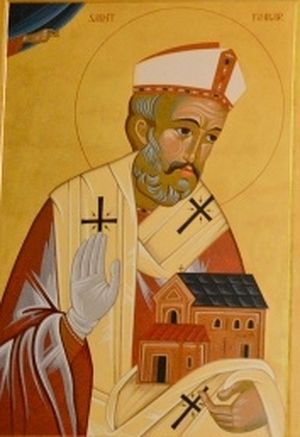HE is called by some St. Barrus, or Barrocus. He lived in the sixth age; was a native of Connaught, and instituted a monastery or school at Lough Eirc, 1 to which, as to the habitation of wisdom, and the sanctuary of all virtues, such numbers of disciples flocked, as changed, as it were, a desert into a large city. This was the origin of the city of Cork, which was built chiefly upon stakes, in marshy little islands formed by the river Lee. St. Finbarr’s disciple, St. Colman, son of Lenin, founded the famous episcopal see of Cloyne, of which he was the first bishop: he died on the 4th of November, in 604. St. Nessan, who succeeded St. Finbarr in his school, and built the town of Cork, was another eminent disciple, trained up under his discipline, and is honoured at Cork, on the 17th of March and 1st of December. Sir James Ware and Tanner take notice, that some, with a MS. copy in the king’s library at London, ascribe to St. Finbarr a letter on the ceremonies of baptism, printed among the works of Alcuin. The right name of our saint, under which he was baptized, was Lochan; the surname Finbarr, or Barr the White, was afterwards given him. He was bishop of Cork seventeen years, and died in the midst of his friends at Cloyne, fifteen miles from Cork. His body was buried in his own cathedral at Cork, and his relics, some years after, were put in a silver shrine, and kept there, this great church bearing his name to this day. St. Finbarr’s cave or hermitage was shown in a monastery which seems to have been begun by our saint, and stood to the west of Cork. It was afterwards given to the canons regular of St. Austin, and was called Gill Abbey, from Gill Æda ô Mugin, a famous bishop of Cork, in 1170, who so much increased this house as to be regarded as its principal founder. On St. Finbarr see his MS. life in Trinity College, Dublin, MS. 31. Giraldus Cambren. De Mirabilibus Hibern. l. 2, c. 49. Mr. Ch. Smith, Ancient and Present State of Cork, t. 1, &c., t. Colganin MSS. ad 25th Sept. 1
Note 1. This lake, called Lough-Eirc, Harris takes to be the hollow or basin, in which a great part of the city of Cork now stands, drained and built on by the industry of the inhabitants. To the reputation of St. Barr, the first bishop and abbot here, is the city of Cork indebted for its original. It takes its name from Corcach, which, in the Irish language, signifies a low marshy ground. [back]

No comments:
Post a Comment
Comments are subject to deletion if they are not germane. I have no problem with a bit of colourful language, but blasphemy or depraved profanity will not be allowed. Attacks on the Catholic Faith will not be tolerated. Comments will be deleted that are republican (Yanks! Note the lower case 'r'!), attacks on the legitimacy of Pope Leo XIV as the Vicar of Christ, the legitimacy of the House of Windsor or of the claims of the Elder Line of the House of France, or attacks on the legitimacy of any of the currently ruling Houses of Europe.